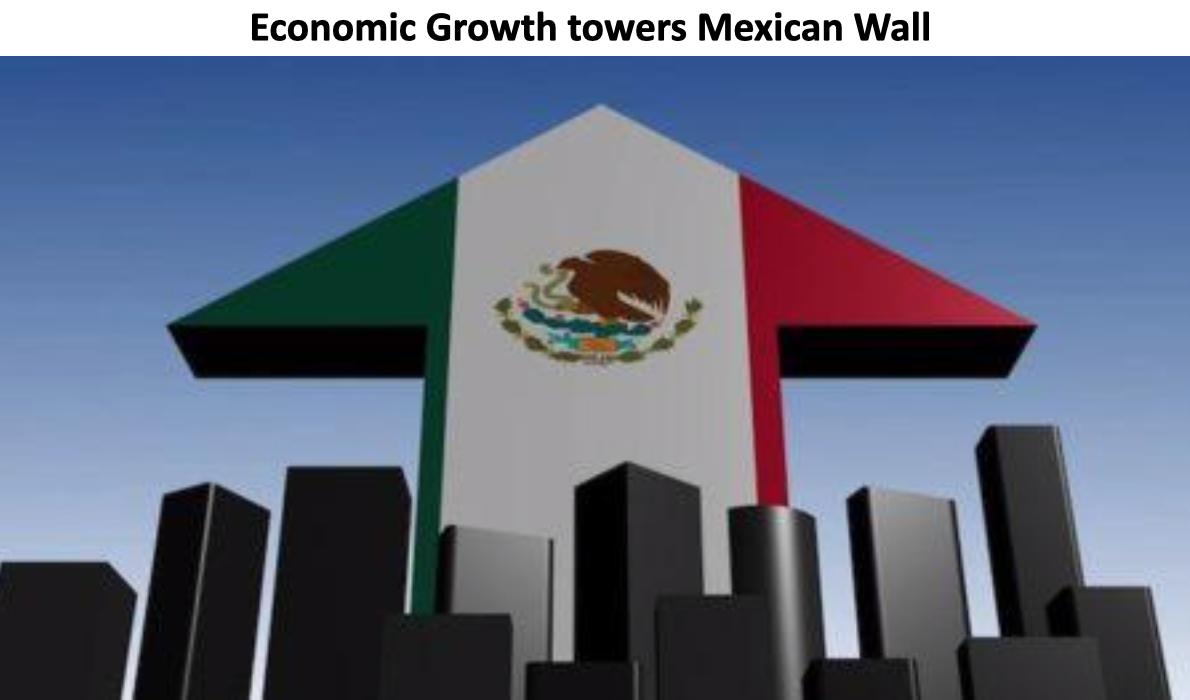
Mexicans have been seen as a country full of poor people desperate to flee to the north in search of job opportunities for higher income and better standards of living. This is because Donald Trump has painted this picture and made it prominent in front of the world. He believes Mexicans are drug peddlers and gang members, who should be kept out of the U.S. with a 30-feet high wall across the U.S.-Mexico border.
But this is not true. While Trump mocks Mexico, steadily and quietly Mexico has grown into a prosperous nation. Economists model economic growth as a rising curve. Mexico’s growth looks more like a straight line. Growth in recent years has been slower than in the 1960s and ’70s, but Mexico still keeps chugging along.
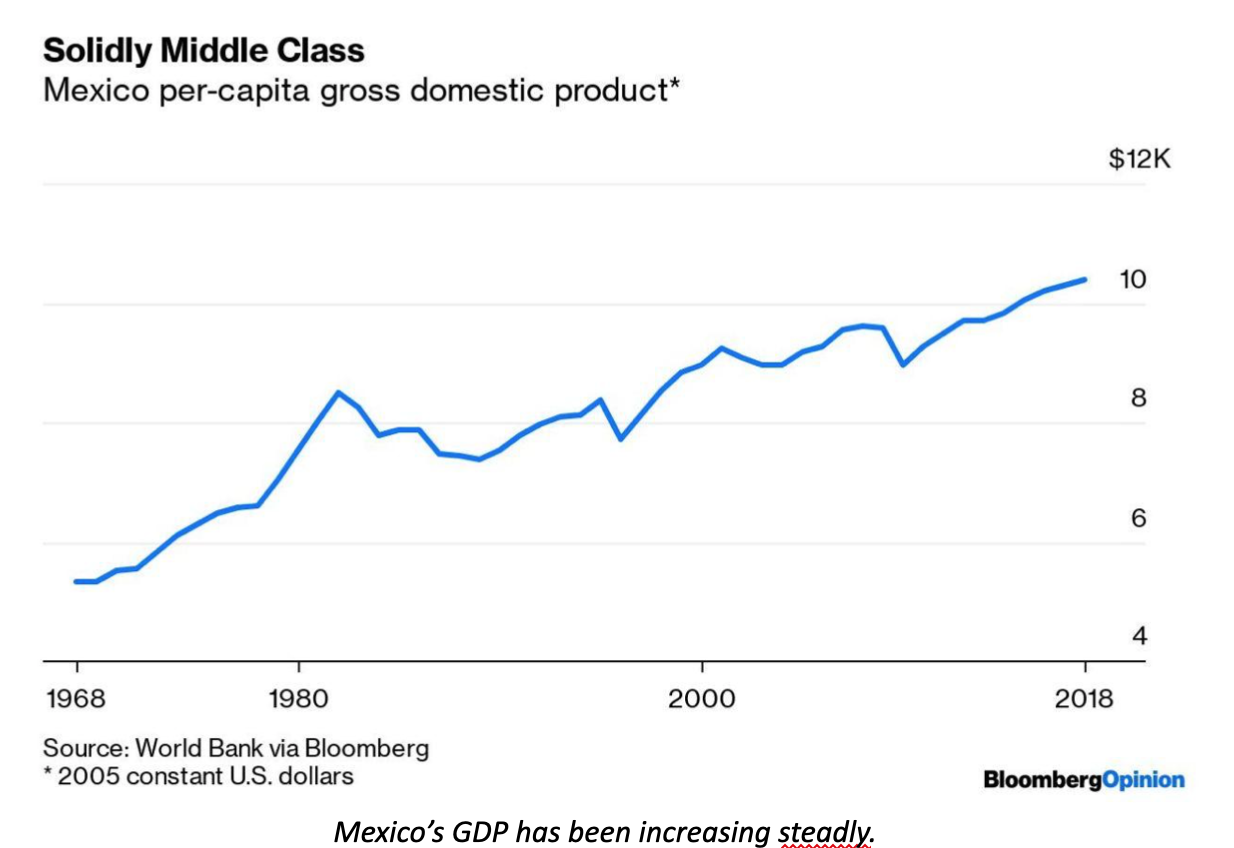
For a poor country, this would be disappointing progress. But the country as a whole is now firmly within the echelons of what the World Bank calls ‘upper middle income’ countries. After adjusting for purchasing power parity, according to the International Monetary Fund, Mexico’s per capita income in 2018 was about $20,600, just ahead of Argentina. And inequality, though still high, is declining.
In 2015, Mexico’s middle class accounted for 47% of the country’s total households, at 14.6 million. The middle class is also expected to continue growing, with 3.8 million households expected to move into the middle-class range by 2030.
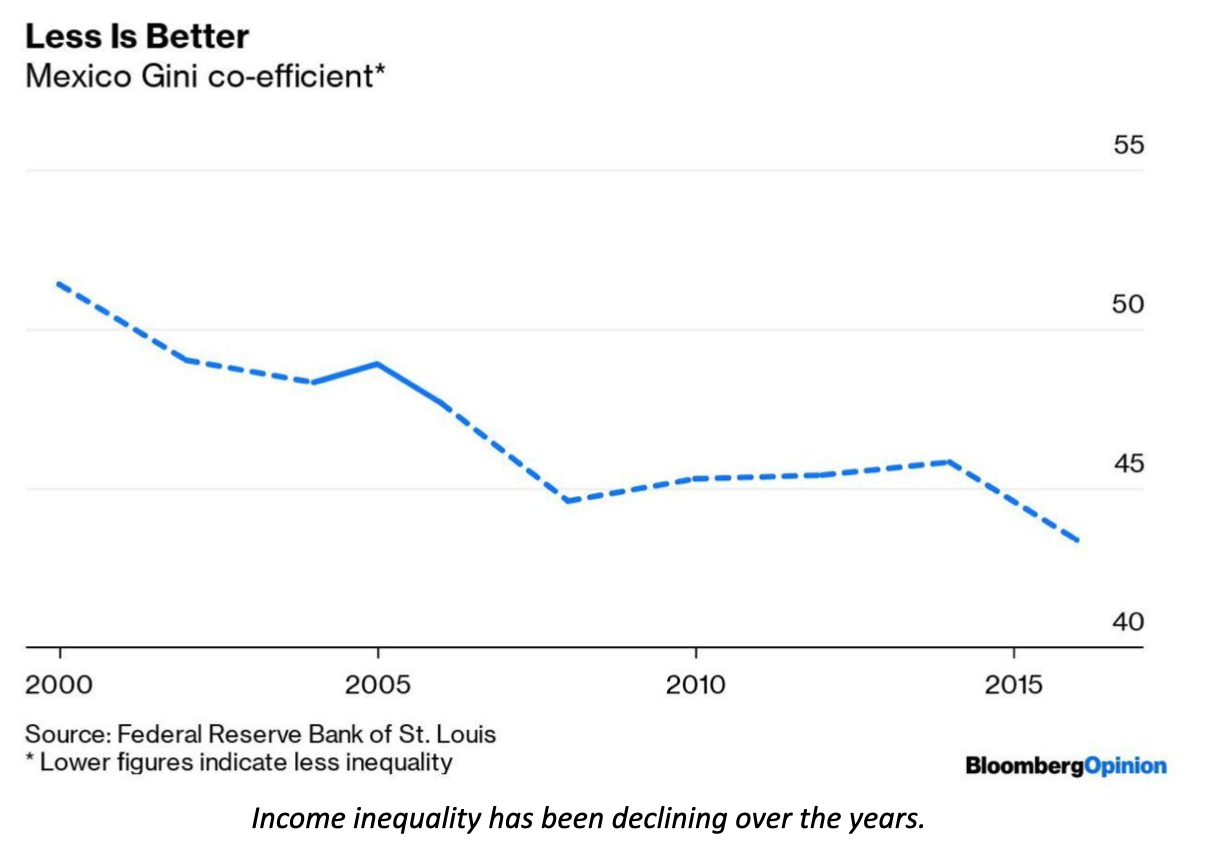
In 2006, Mexico was the world’s sixth-largest oil producer. But its biggest petroleum deposit, the massive Cantrell field under the Gulf of Mexico, went into a steep decline around the middle of last decade. This means Mexico would have to retool much of the economy from the capital-intensive business of pumping oil out of the ground to the labor-intensive business of making goods in factories and providing services in office buildings.
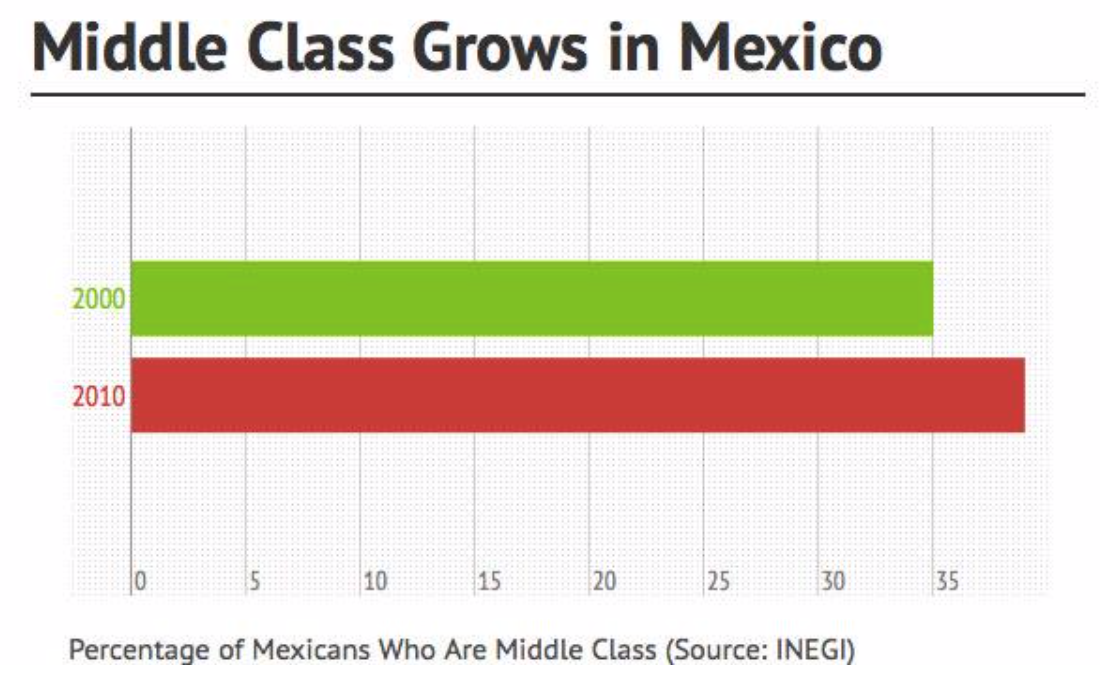
In spite of taking a big hit in its key sector, Mexico is handling this transition skilfully. It has more than doubled the percentage of its gross domestic product that it spends on education since the 1990s, and its literacy rate has risen to an all-time high of 94.9%.
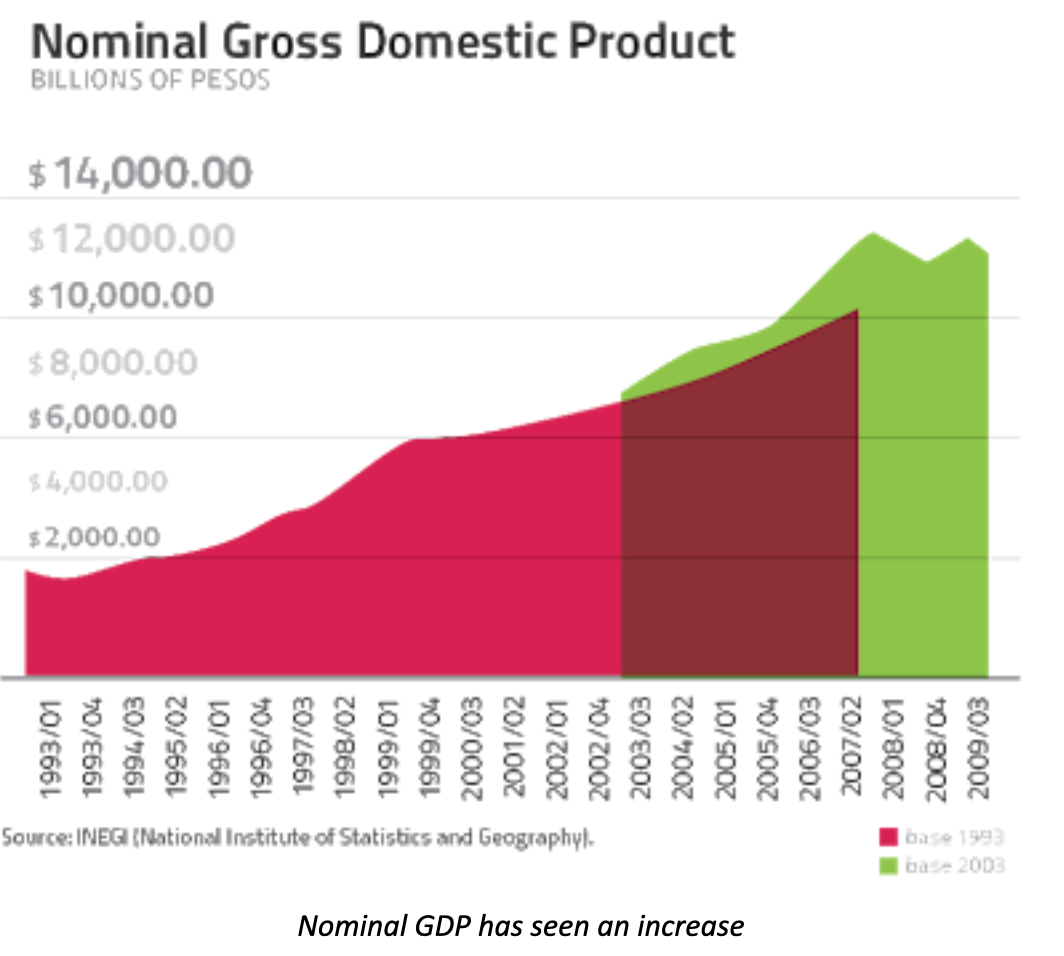
Meanwhile, foreign investment has been rising despite declining oil output. This investment, most of which is going to manufacturing industries, is both a result of Mexican productivity gains and an enabler of further gains. The foreign companies that invest in Mexico, like Foxconn, General Motors and Samsung, bring advanced technology into the country.
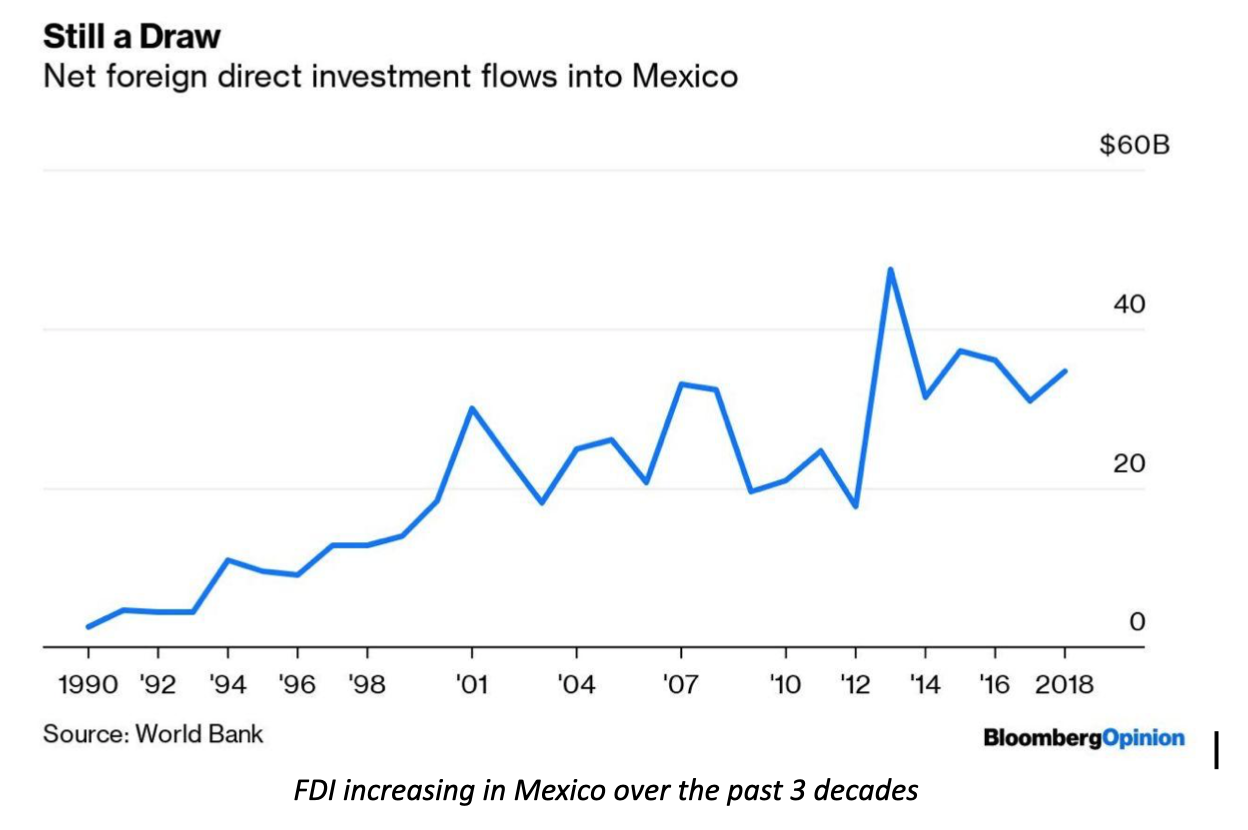
As a result, Mexican exports have risen steadily. BCG reports that electronics exports, traditionally a mainstay of advanced economies more than tripled between 2006 and 2013. The auto industry is a big driver as well. Between 2011 and 2018, Mexico’s exports of new vehicles to the U.S. increased by 93%.
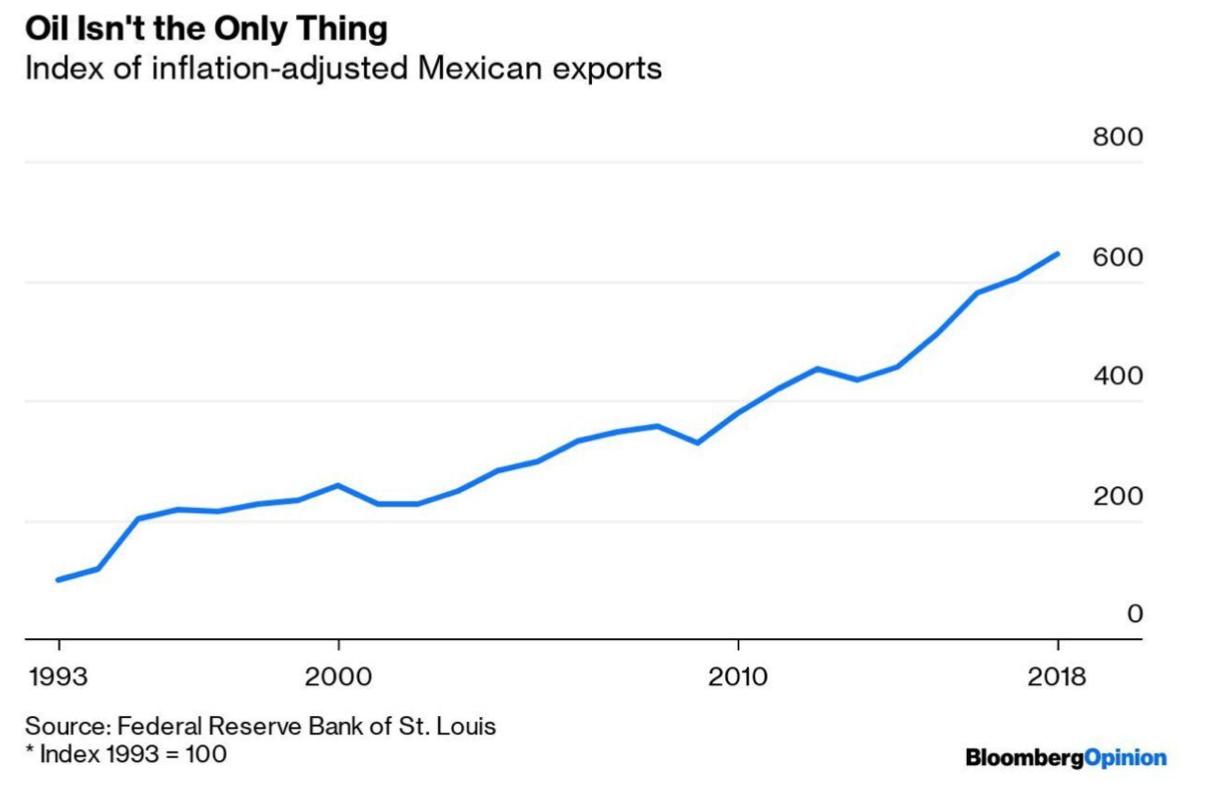
It’s little wonder, therefore, that the flow of workers from Mexico to the U.S. has reversed in the years since 2007.
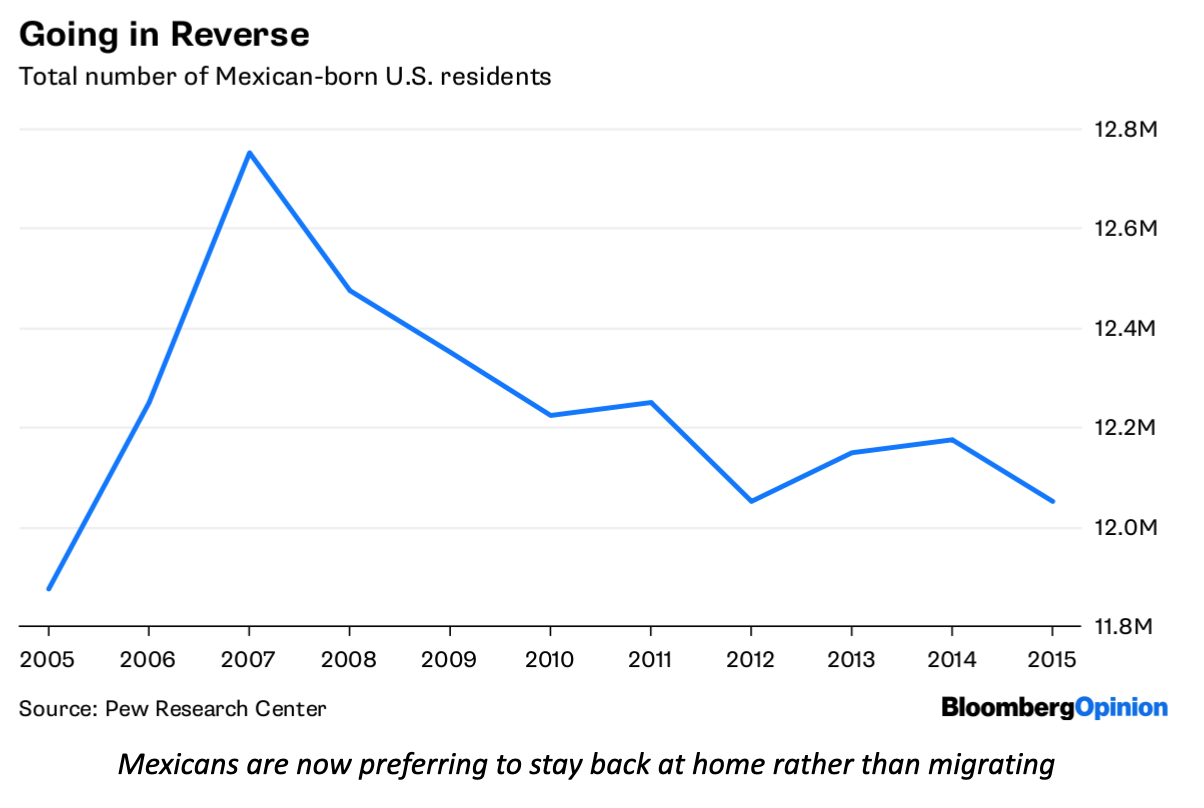
Since the mid-1990s, income levels in Mexico’s urbanized areas have grown to an average of $26,654 annually. Minimum wage levels have also risen to a high of 67.29 Mexican pesos, or $5.13 U.S. dollars. As a result of the country’s manufacturing sector growth and energy sector expansion, economists forecast Mexico’s economy to grow to the fifth-largest in the world by 2050. This growth is expected to add to the increasing income levels and purchasing power of Mexico’s middle-class consumers.
This is not to downplay the big challenges that still remain for Mexico. The country’s crime rate, driven by a destructive drug war, is extremely high. Although inequality has fallen, it remains at very high levels, meaning growth and jobs will need to be spread out more from big cities and flagship industries. Social services for the poor will need major improvements. Mexico needs to diversify its export destinations so that it’s less at risk from a downturn in trade relations with the U.S. And finally, it needs to invest in creating globally recognized brands so that it can capture more of the value from manufacturing supply chains.
So Mexico still has an uphill struggle ahead of it. But the country is doing much better than many realize. Instead of a slow-growth basket case, Mexico is an upper-middle-income country rapidly retooling itself to compensate for a decline in natural resource wealth.
By Shyam Sampat
(Literary Sources- Bloomberg, Investopedia)
